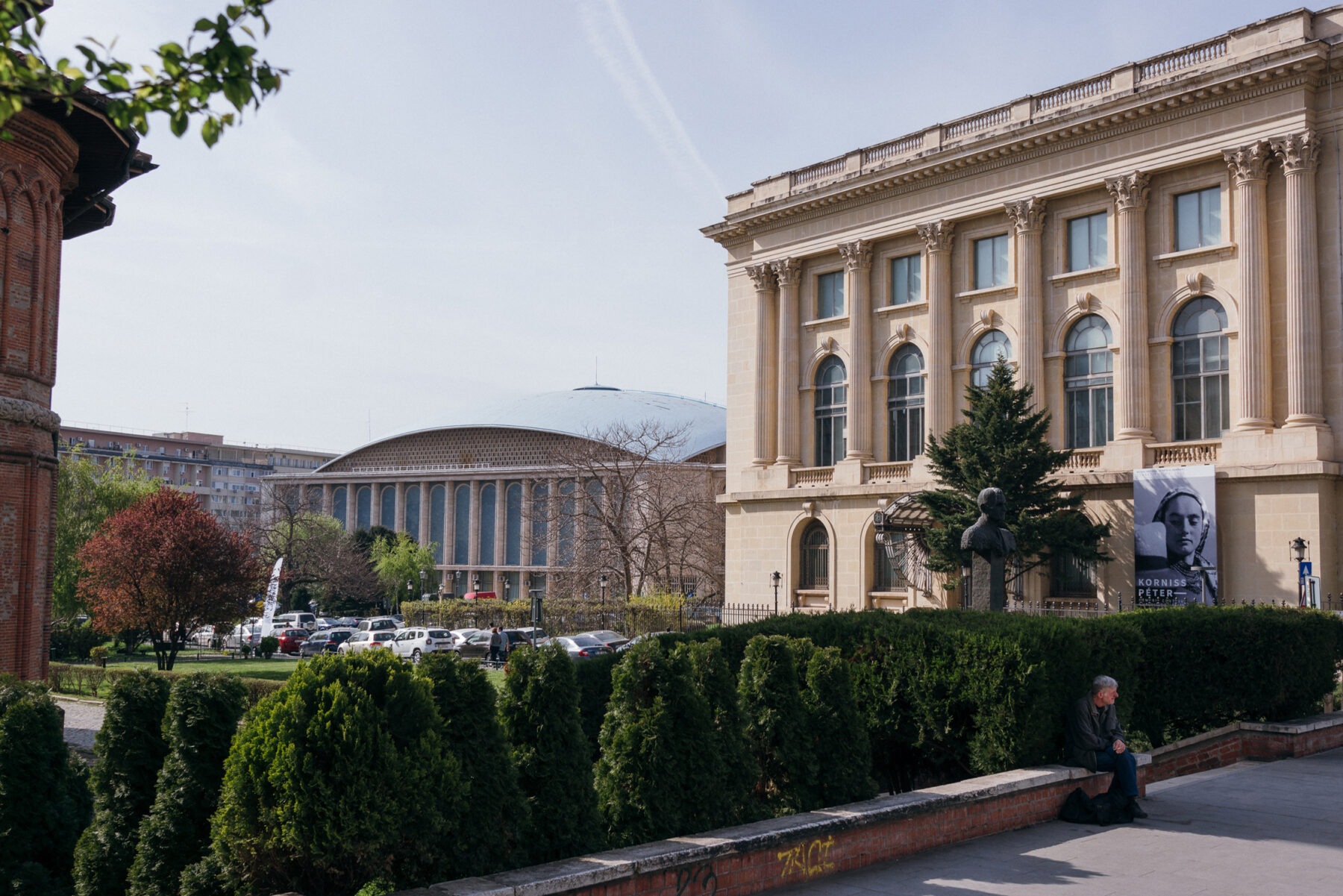The street is wide and crowded, with broad pavements splayed out either side of the road, cars tearing through its center, and Parisian-style facades climbing up above.
It is Calea Victoriei, the artery of Bucharest. It was initially known as Ulița Mare, simply ‘large street’, and connected the city to Brasov in Transylvania. In 1692 it was decked with wood and renamed Podul Mogoșoaiei. The wooden boards allowed trade through spring and autumn, when the other routes across the Balkans would turn to muddy slicks. The wealthy merchants and aristocrats built their houses by the road, and it was the pride of the local people. On October 12, 1878 the road was named again, Calea Victoriei—‘Victory Avenue’. It was named in honor of country’s triumph in the Independence War under King Carol I, marking the birth of the nation of Romania.
Luiza Popescu tours the streets of Bucharest.
“Carol I,” the singer and Bucharester Luiza Popescu says, pacing down the sun-drenched boulevard, “he was King of Romania for nearly 50 years. He did great things with the city of Bucharest. The aristocratic families under Carol had great taste in their houses—they brought in architects from France.” She gestures out at the four or five-story structures, covered in ornate engravings. “They made our buildings beautiful.”
“I come from the countryside, Ploiesti, a town about 50km north of here,” Luiza explains. “The first time I visited the city I was ten, I had never seen anything like it. It was two or three years after the revolution, where,”—she looks up and points down the road towards a square that opens out—“The Revolutionaries removed Ceaușescu, our communist leader. He wanted to be the greatest leader in Romanian history, but this meant erasing the past. Most of the buildings here are older, but he made a lot of the concrete blocks that you’ll see around.”
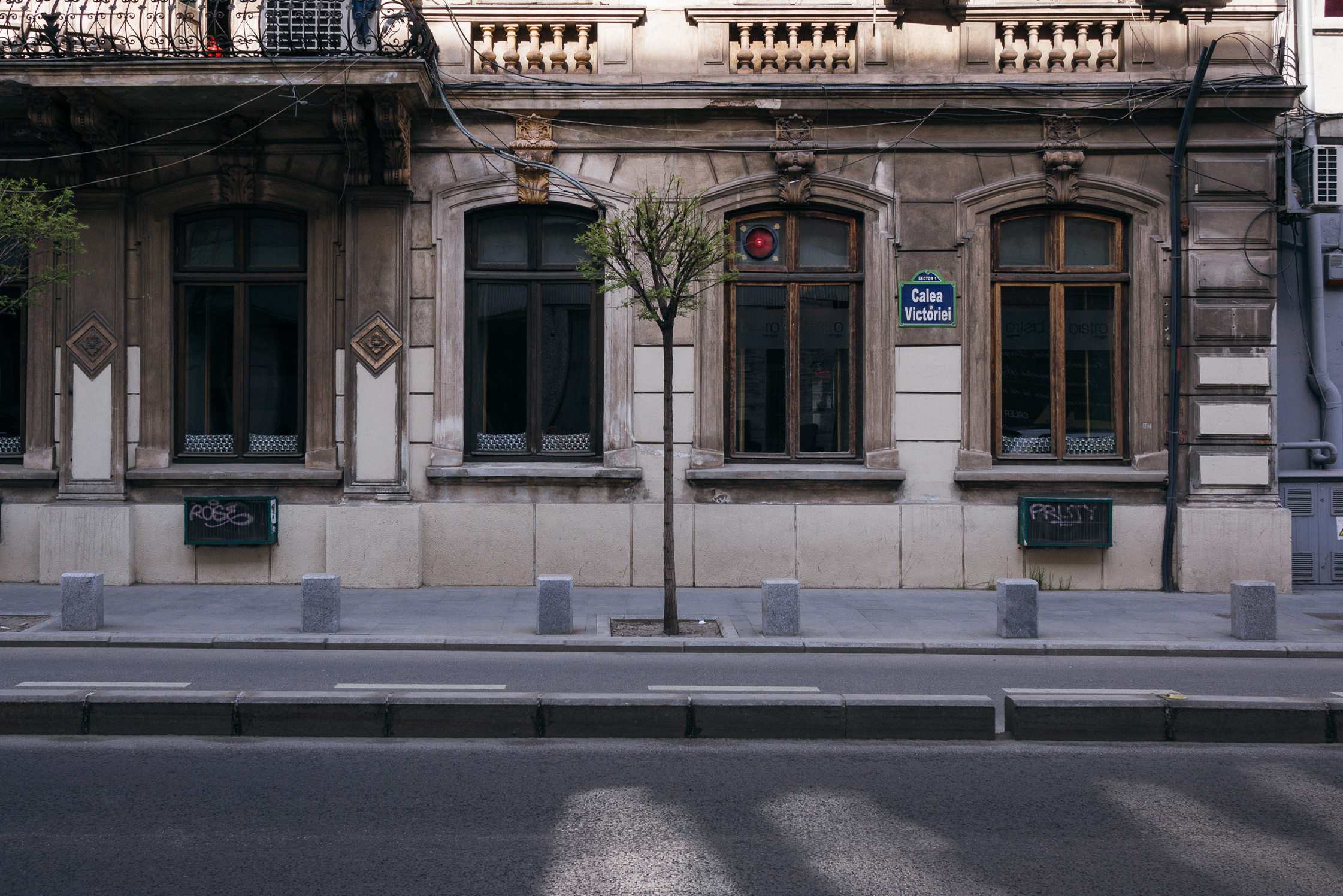
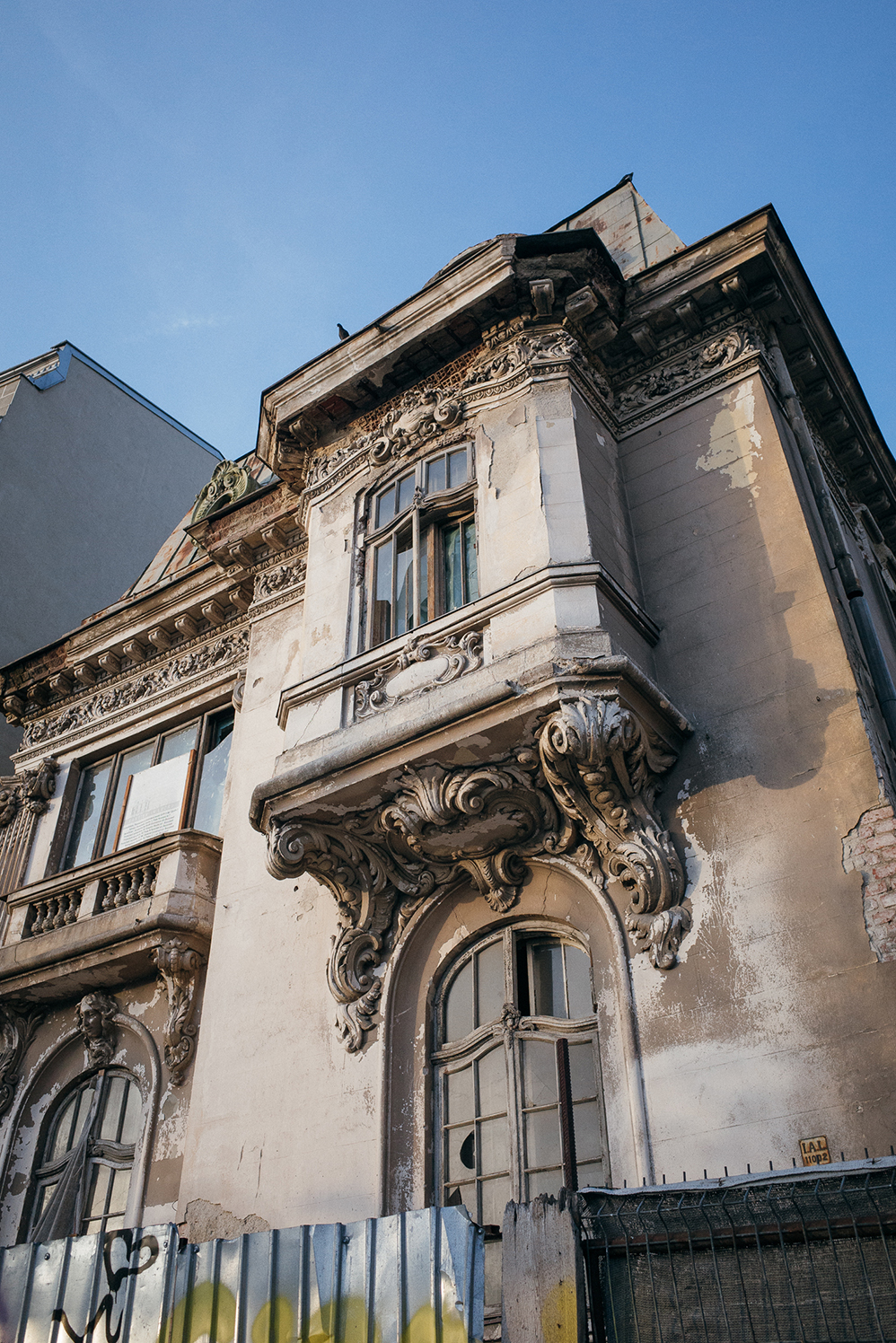
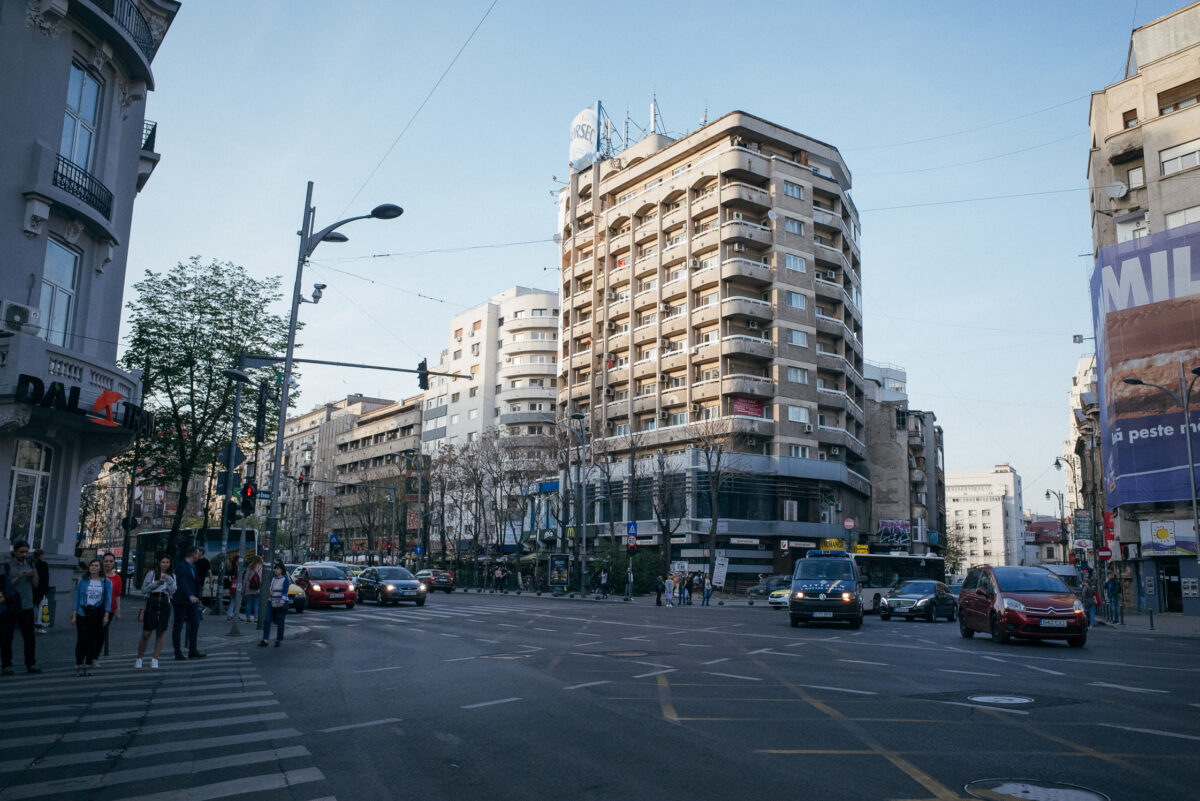
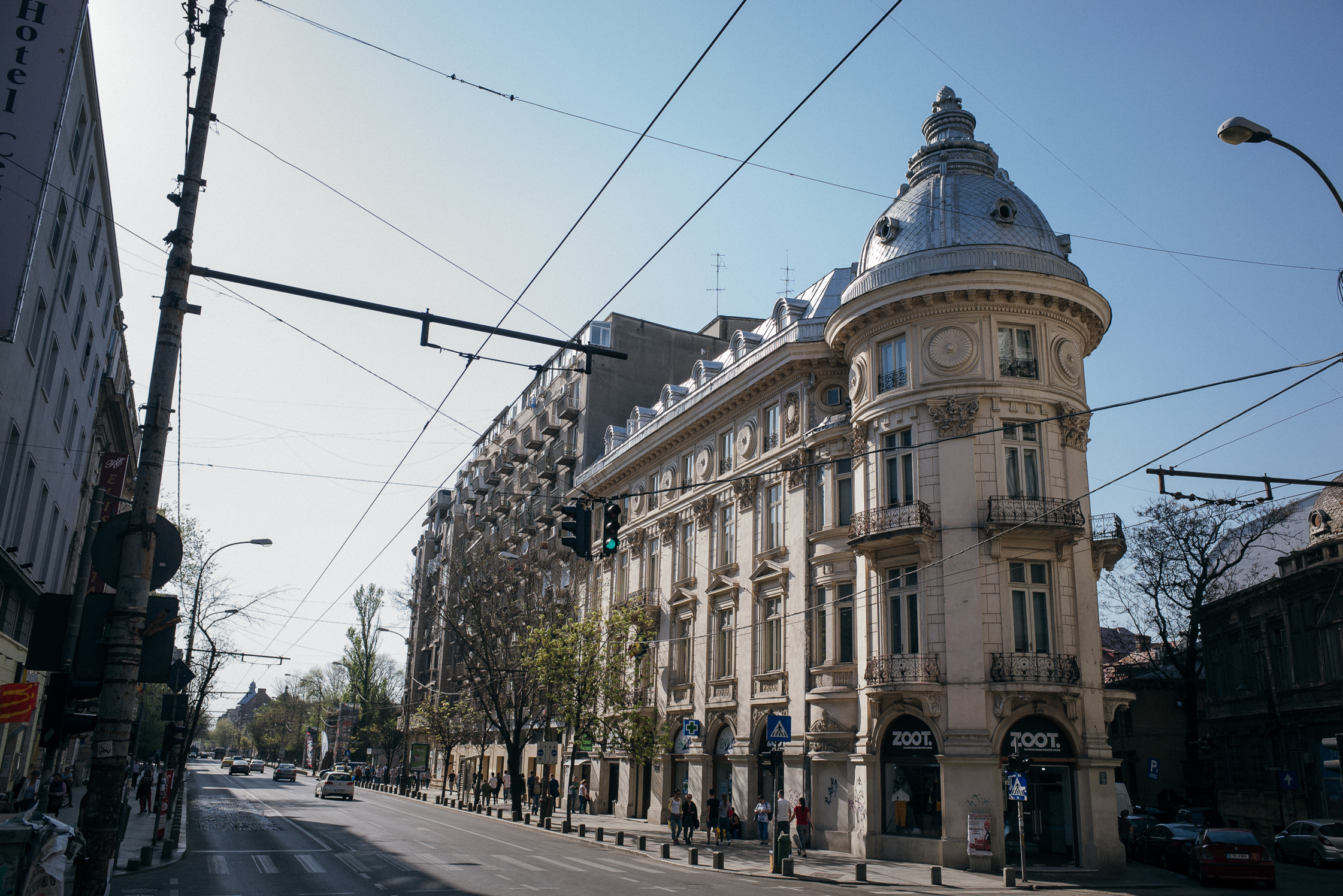
Bucharest is a place of contrasts. The communist style Ceaușescu had left behind him can be seen dispersed about the city: Functional flats recur alongside the grand townhouses; a cuboid concrete clock tower pokes out between the splendour of this Eastern European Paris. The road comes to the Piața Revoluției; “Revolution Square! In 1989 the riots against Ceaușescu began here. The revolutionaries caught him, arrested him, judged him, and killed him,” she says. The country was a different place under communism.
“The first time I visited the city I was ten, I had never seen anything like it. It was two or three years after the revolution where the revolutionaries removed Ceaușescu, our communist leader.”
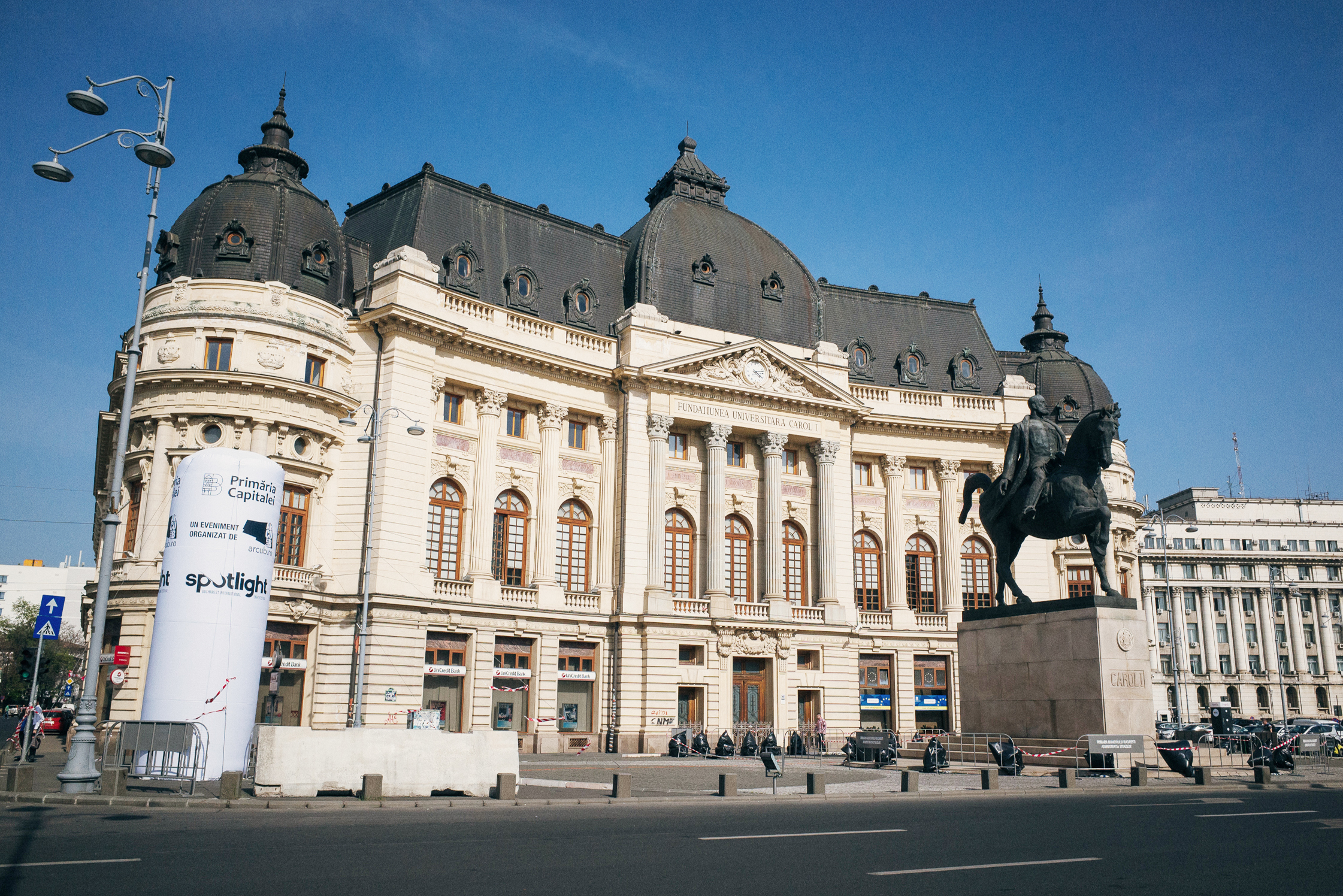
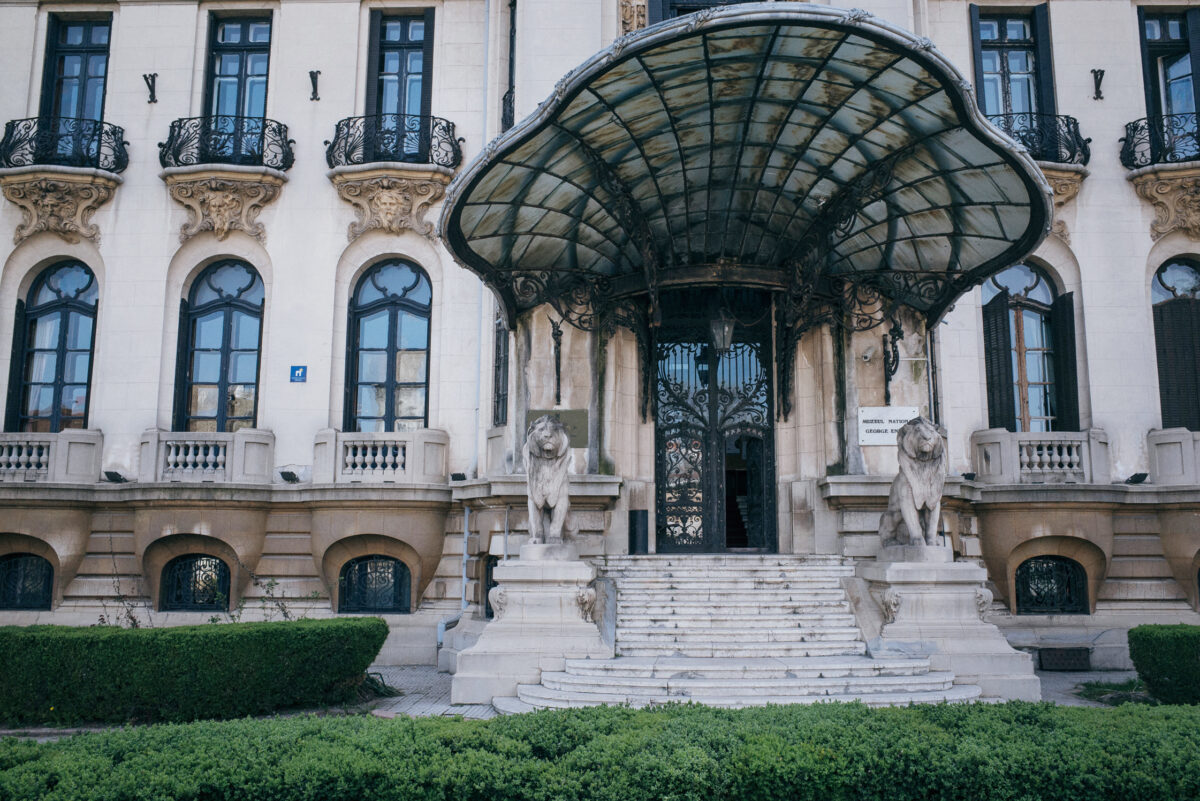
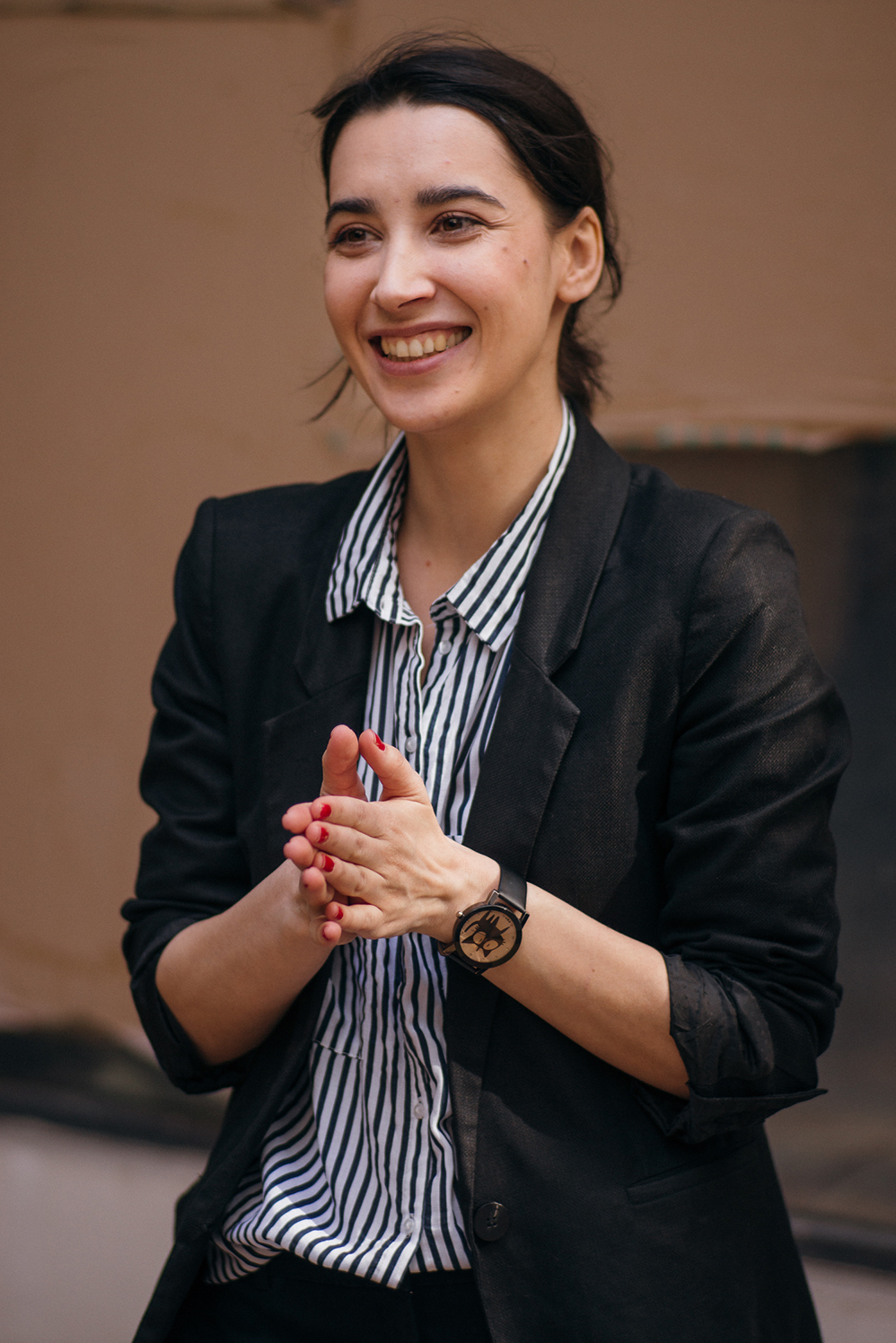
Her music certainly reflects a more international sound. Her band, YellLow, was signed by Universal Music Romania for their poppy electronic sound, bringing in dubstep, rap, and house influences. “We sing in English, we think it sounds better. If you listened to a bit of Romanian music I think you’d hear how it’s different to mine,” she says, laughing. YellLow have been performing all over—they were in Beijing a few times through 2017. But that evening YellLow were supporting the local scene, performing alongside Modeselektor and Nightmares on Wax at Control club for the launch of Electronic Beats Romania. “I sang in a cover band too, but last year I stopped playing with them and began a solo acoustic act,” she tells me—she plays all over the city. Luiza stops at the museum of George Enescu, the composer regarded by many to be the most important musician in Romanian history. The building itself is Art Nouveau, with organic patterns swirling around every detail, and a great leafy awning in wrought iron and clouded glass stretching out over the door . “It used to be the palace of Cantacuzino, a noble family with a great history,” she says as she walks through the gates, before heading into a quiet square situated just behind the building. “I discovered this place two years ago I think. I went in alone once and I stayed a couple of hours. It’s relaxing. The street is so busy, but it’s quiet here. I like it for that.”
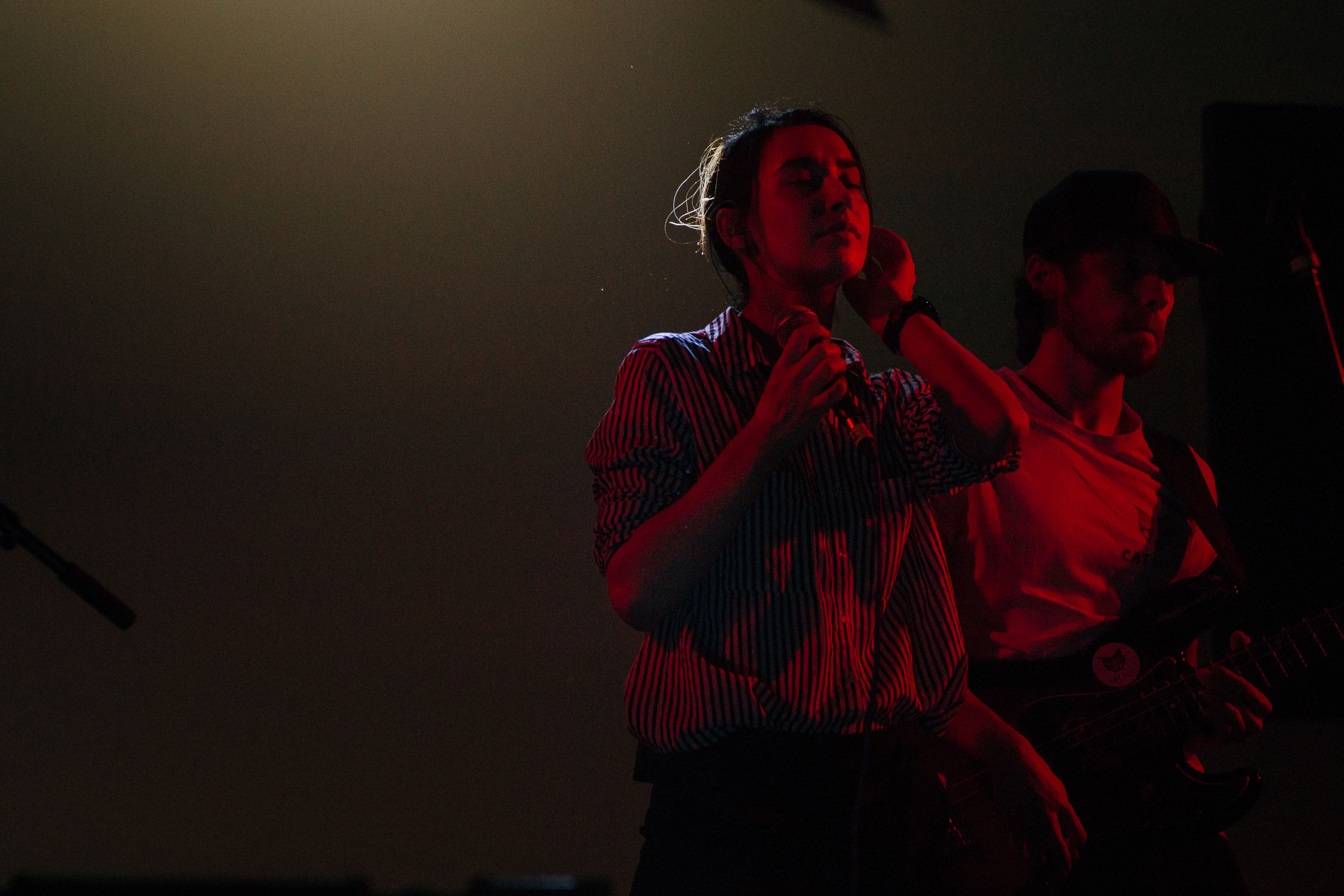
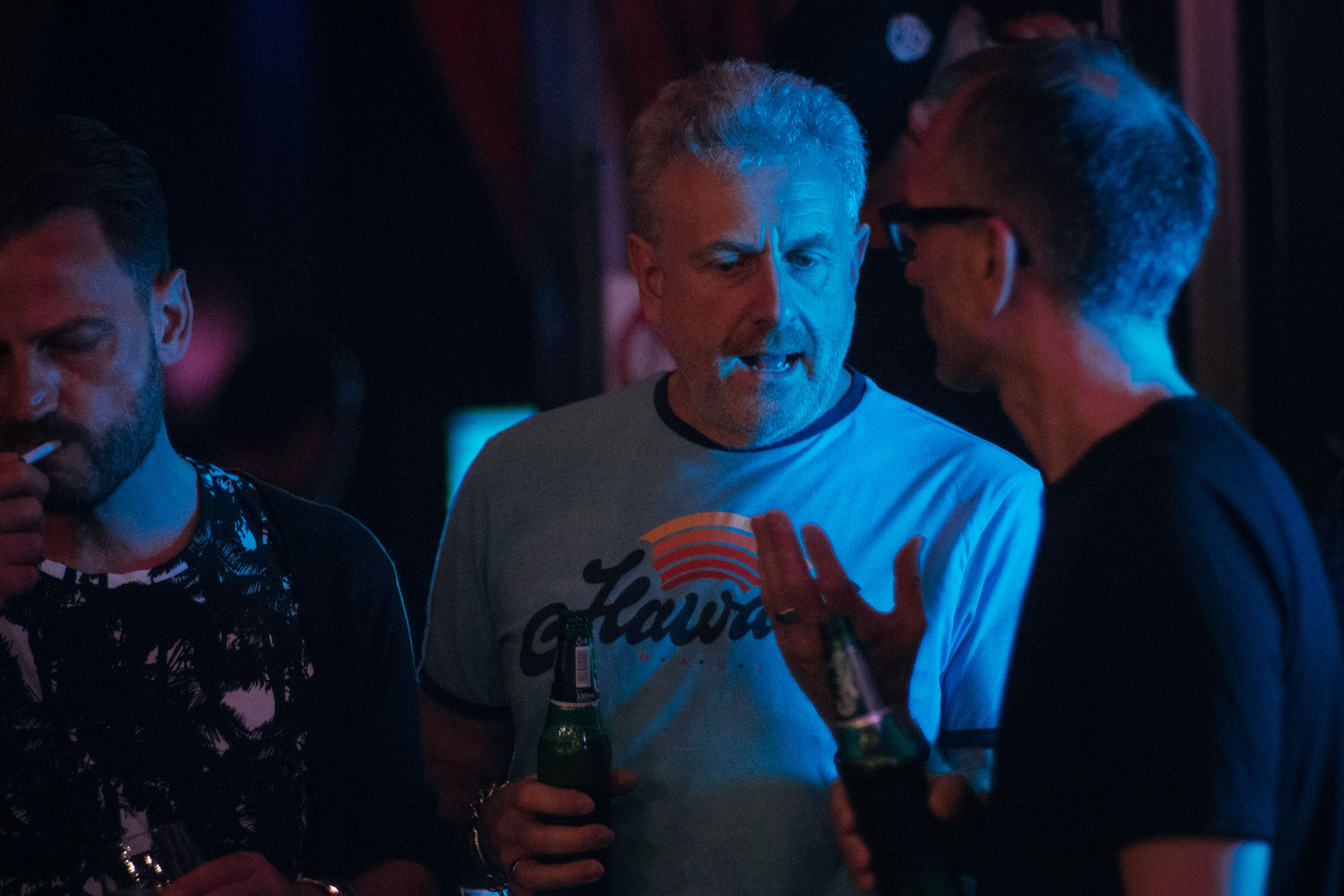
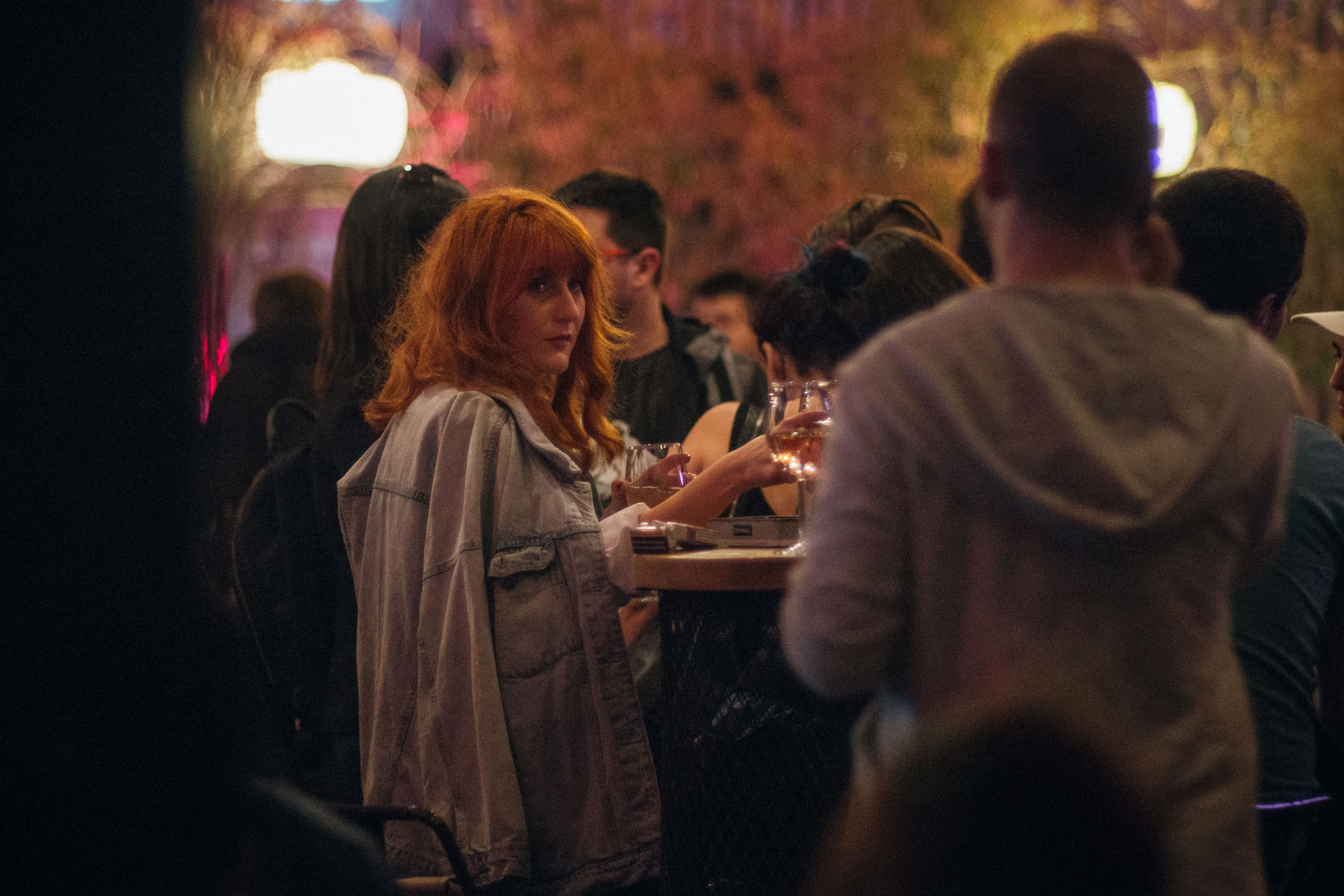
“It used to be if you saw a tourist they must be lost or something, like ‘Why are you here?’”
Ilinca Marinesco
Walking down Calea Victoriei again the next day, the 3D artist Ilinca Marinesco offers her own take on Bucharest. She’s bright and lively as she speaks: “I want to show you a new part of town,” she says, smiling. “I’ve lived here my whole life—the city has changed a lot. Over the last ten years there’s been more international interest, but the past five have been crazy. It used to be if you saw a tourist they must be lost or something, like ‘Why are you here?’” She laughs, and gestures around at all the different people that have come to visit Bucharest. Ilinca points to a gate and slows down to take a look. The gate itself is dripping with gold, and it leads into an absurdly luxurious mansion with a huge red carpet permanently rolled out. “After communism everybody went gold-crazy here, it was all part of this show-off culture. Everyone who had money before could spend it again—by the 2000s Bucharest had become some kind of El Dorado!”
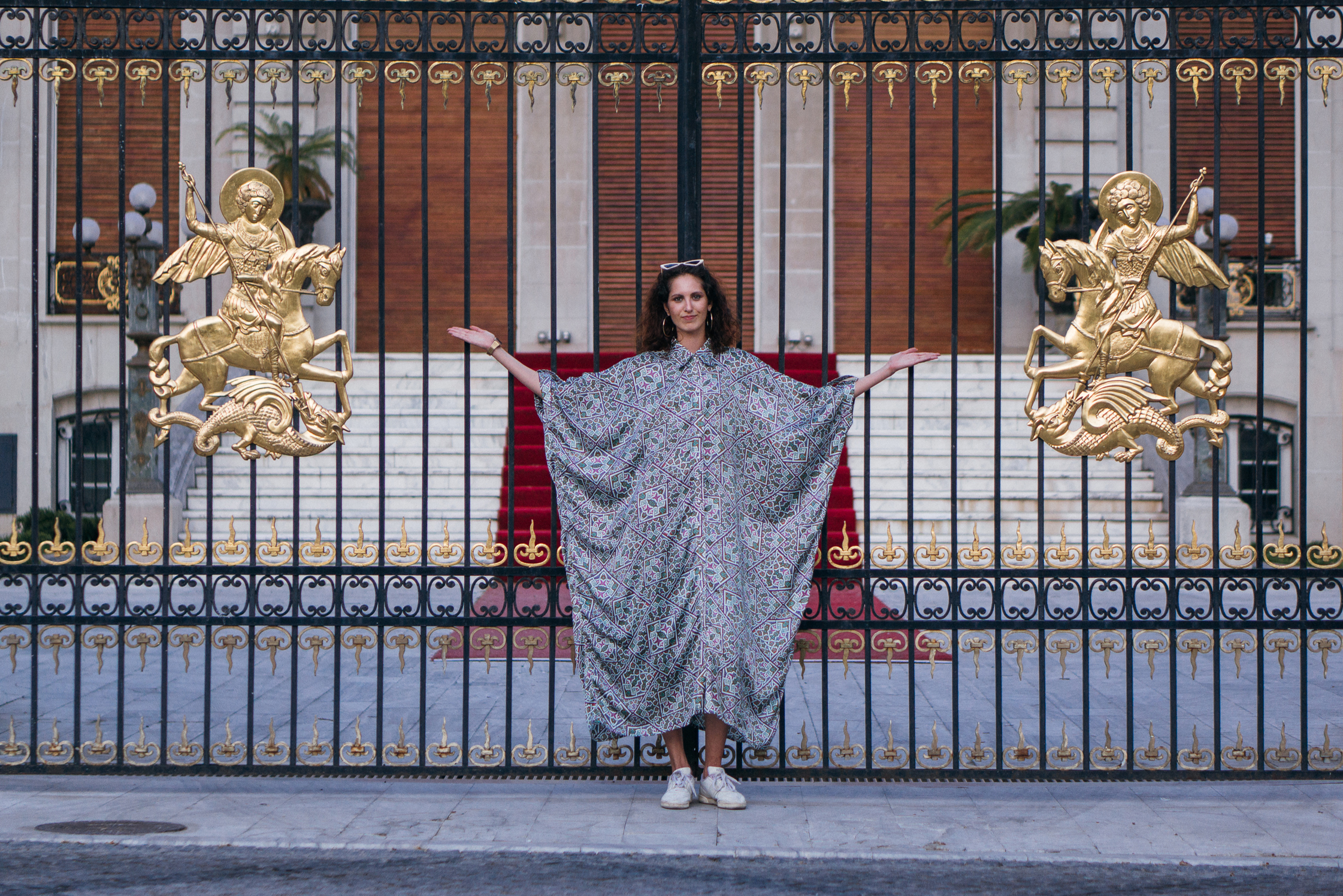
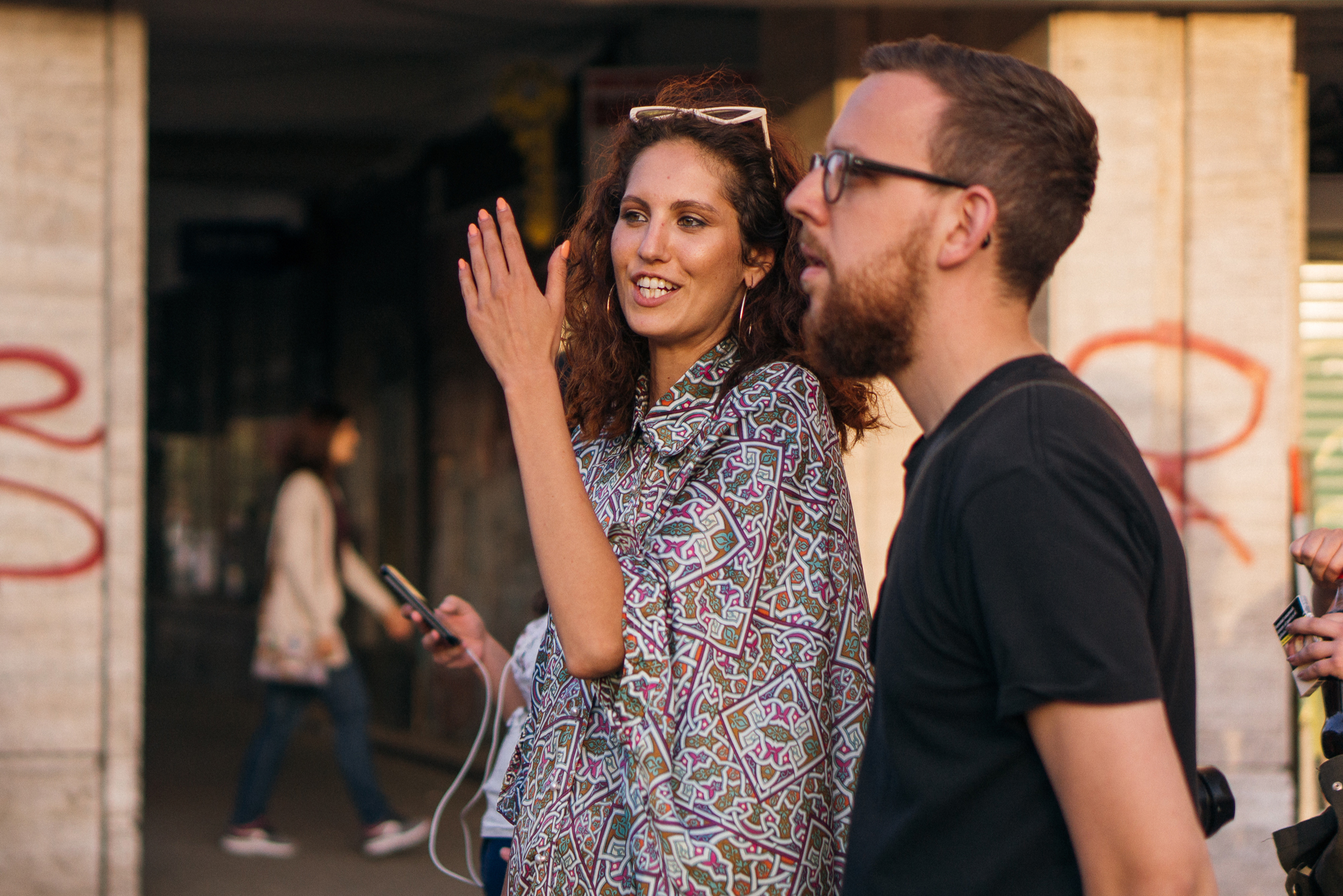
“The youths here, they’ve got this mentality of, ‘let’s do it and let’s do it good.’”
Ilinca Marinesco
But it’s not all kitschy gates and showy mansions. “The city, it’s eclectic: the architecture, the people, the food, the music,” Ilinca says, counting them off on her fingers as she walks. “There’s Russian influence, some Turkish, some Armenian; some buildings are regal, some communist, some capitalist.” She only needs to look around to prove her point. “This bar we’re going to, Mikkeller, it’s international. They have them in Berlin, New York, Amsterdam, all over.” Walking out the end of Calea Victoriei Ilinca begins down Bulevardul Aviatorilor. The avenue passes three massive state museums, and up the other side of the street huge embassies dominate the space. The spaces are wider and there’s greenery everywhere, and further up the road hundreds of trees line Kiseleff Park on the left. Ilinca wanders on through the park in the same direction. “This is the greenest part of Bucharest. Most of it is quite built-up, but here in the north there is more nature.”
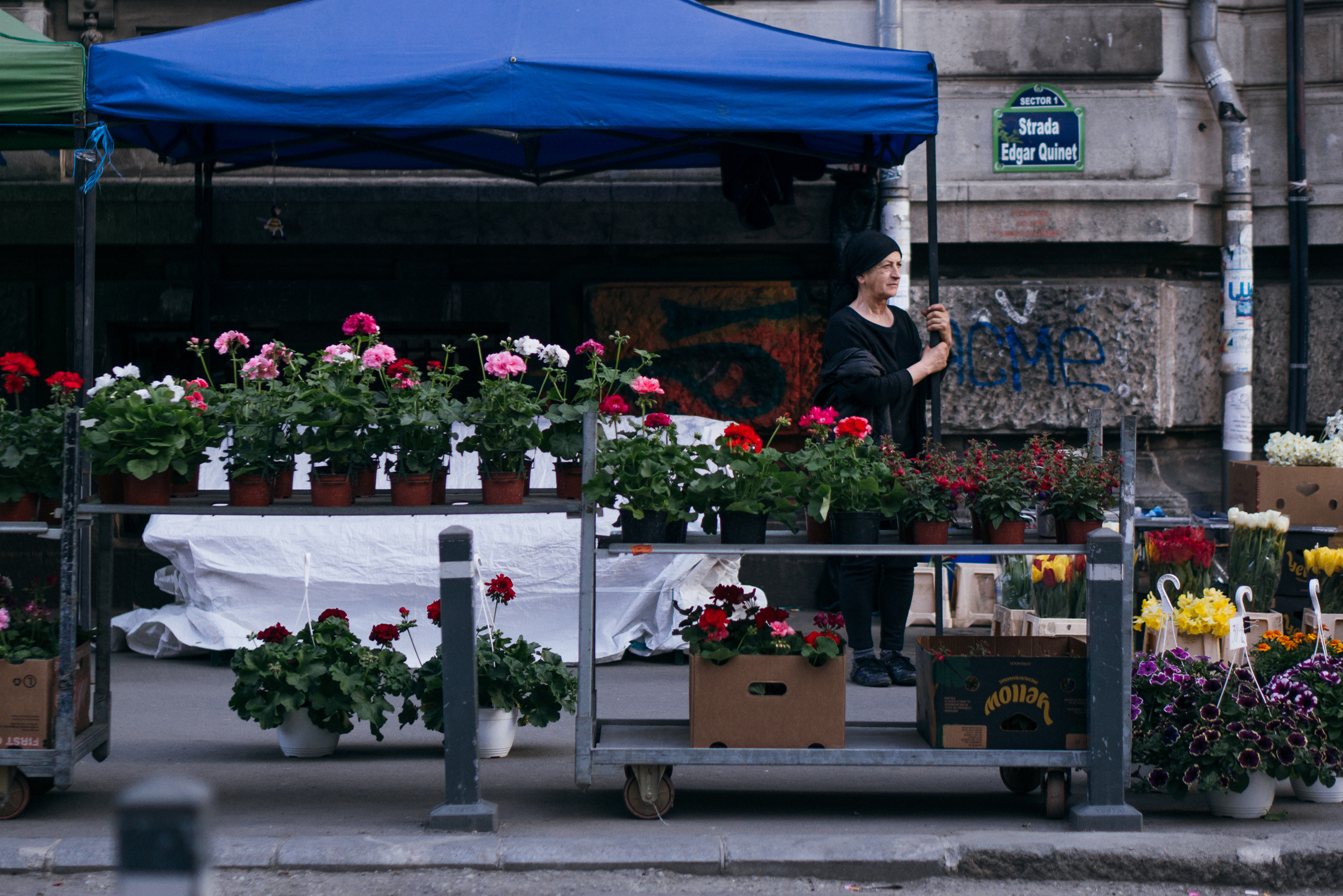
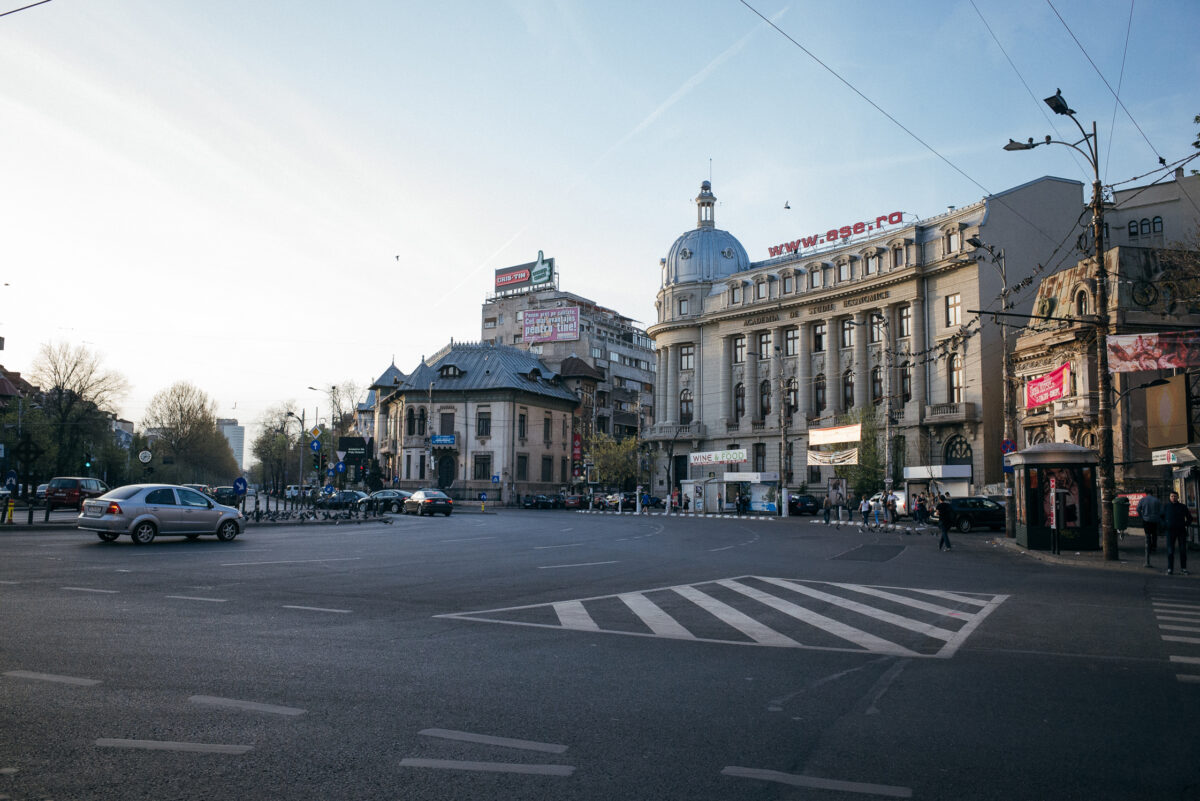
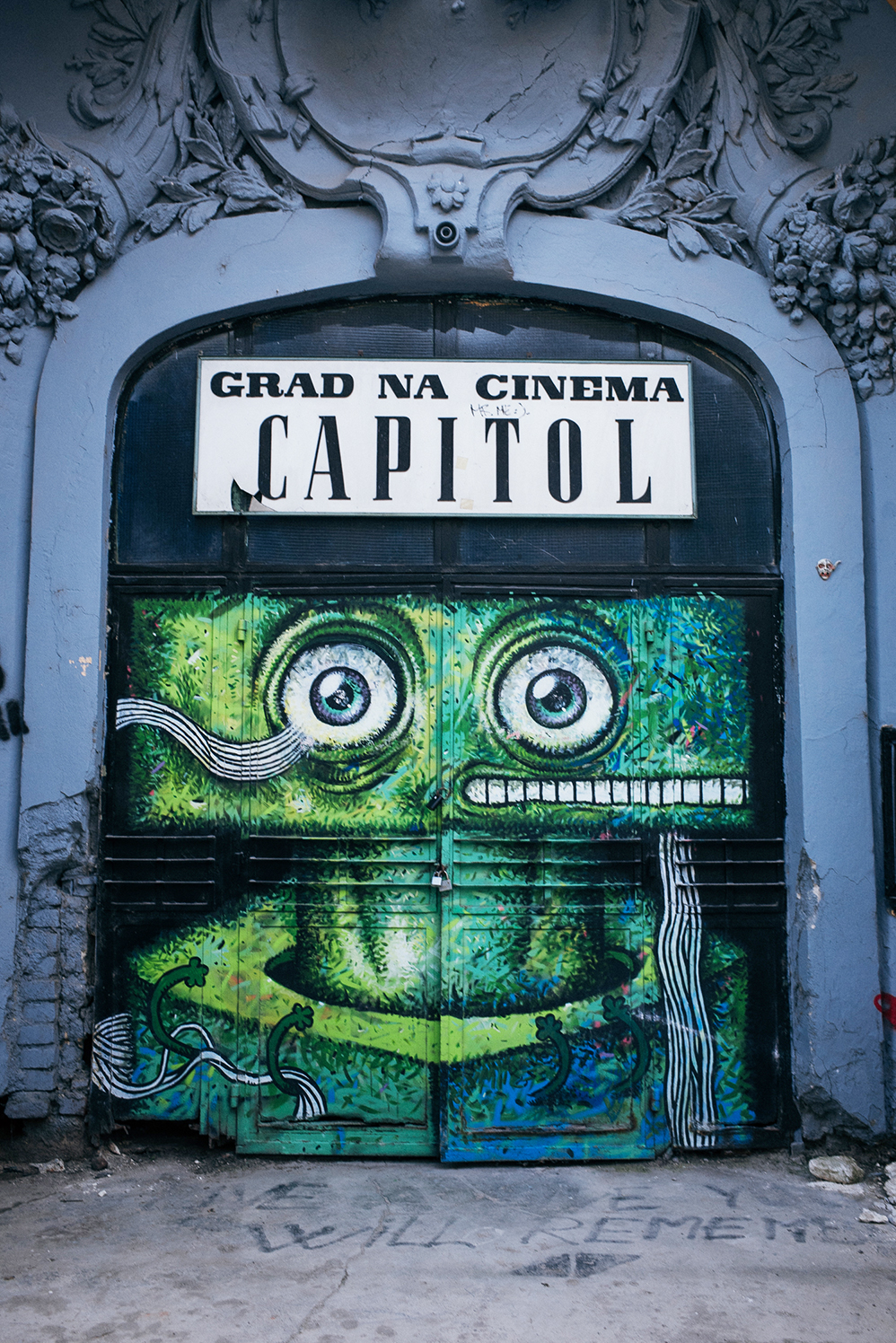
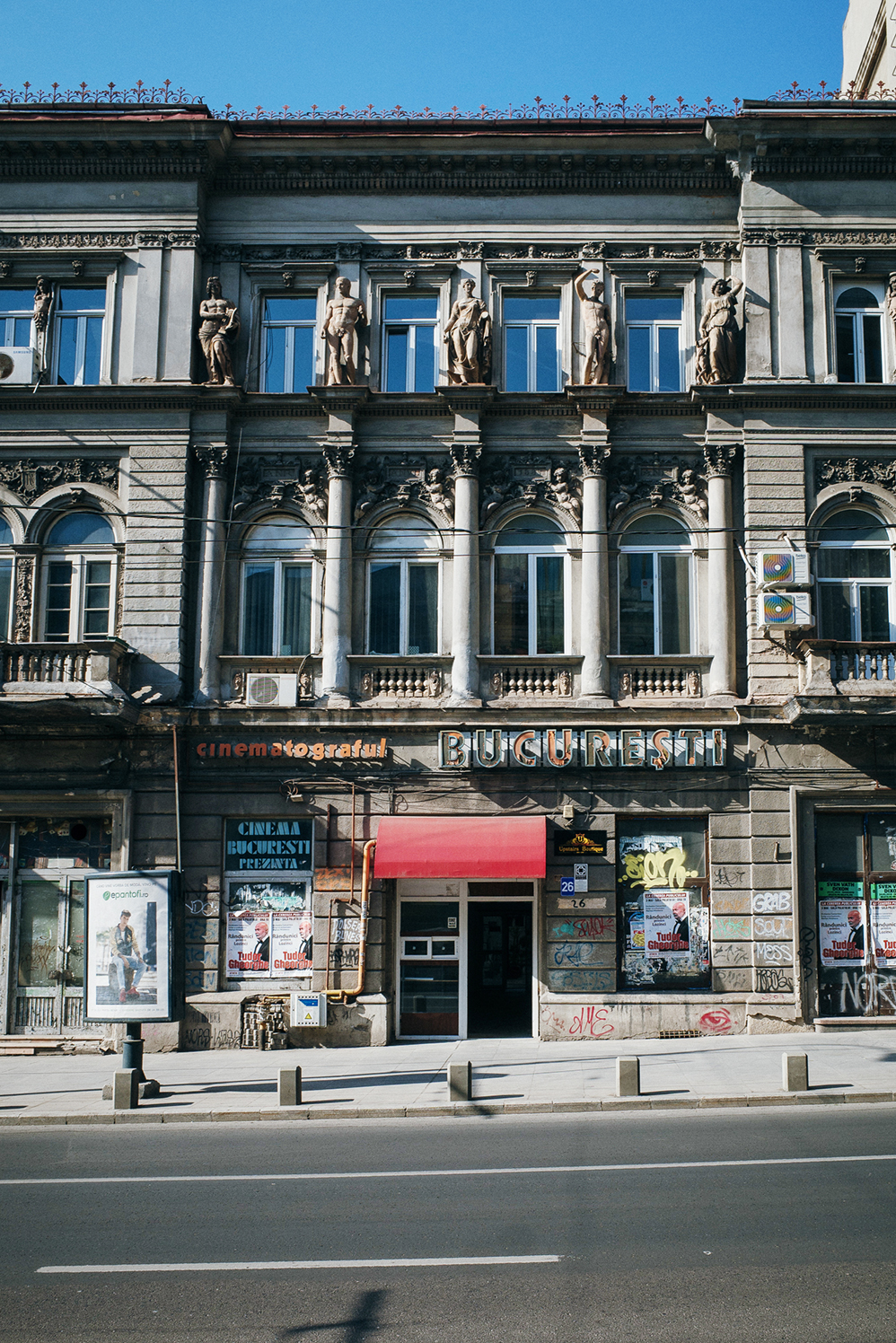
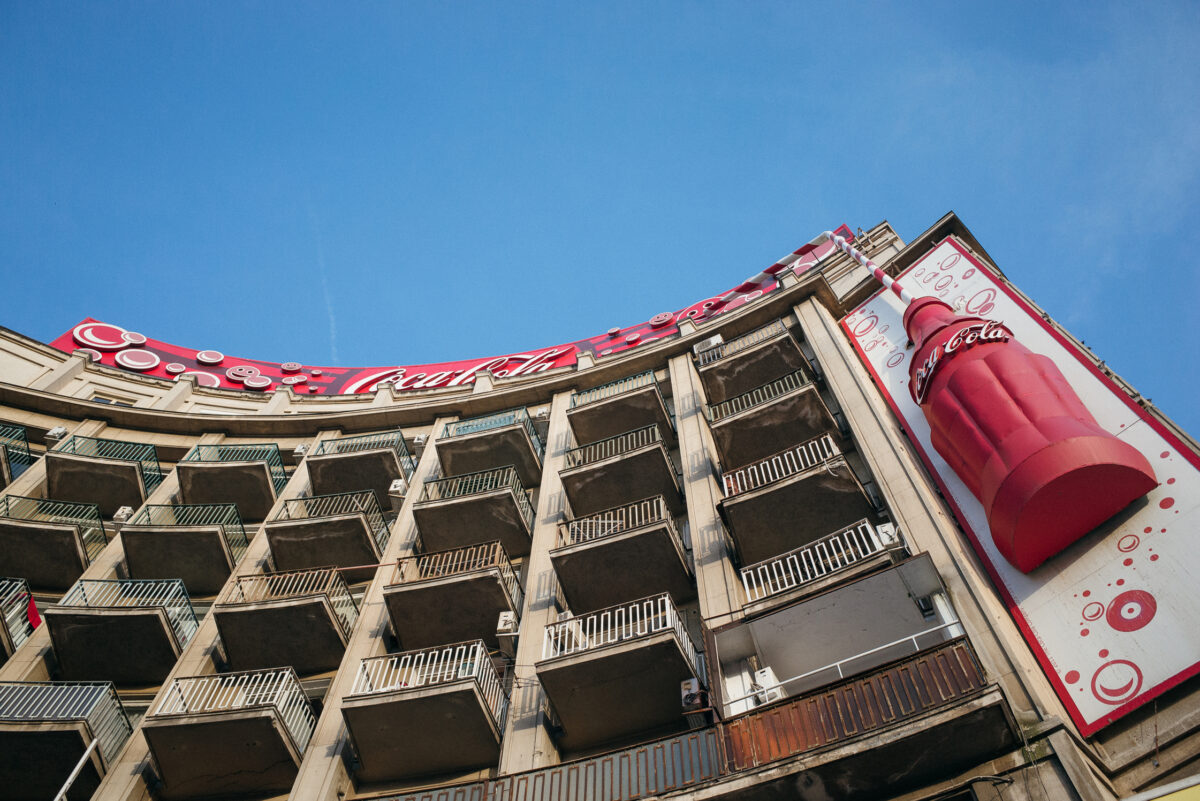
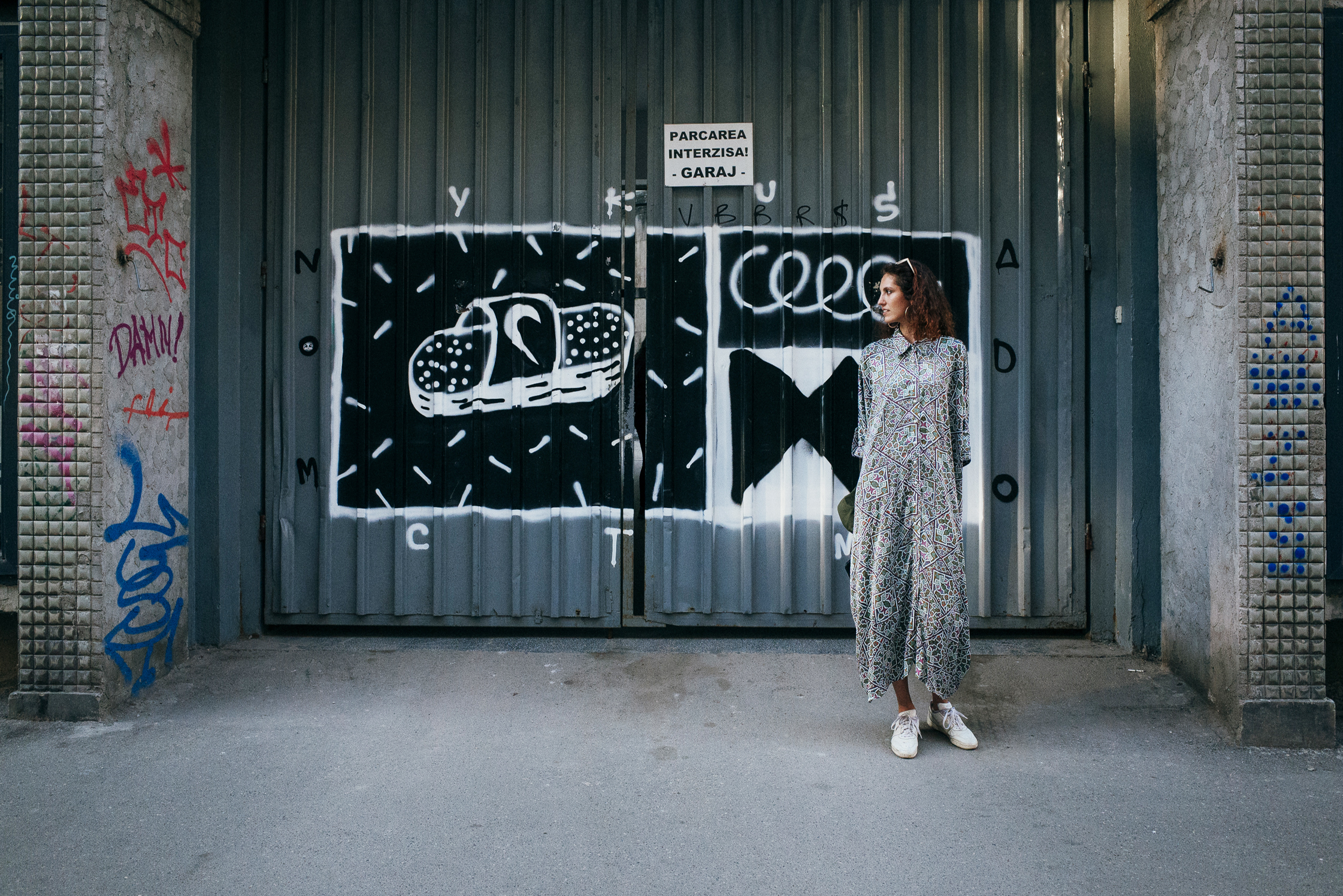
Approaching Mikkeller, Ilinca suggests stopping into Bob—“Bob, it means bean, like coffee bean, you know?” One espresso, one machiatto. “The coffee roaster here,” she says, pointing to one of the men chatting behind the counter, “he won an international award for his roasting. When I heard I couldn’t believe it, coffee is such a new thing here! But the youths, they’ve got this mentality of, ‘let’s do it and let’s do it good.’” The barista gently places the coffees down with a smile. Perfectly done. Upstairs is Mikkeller, a Danish craft beer chain. The place is dim-lit with a wooden bar and a chalkboard above the taps listing the different beers on offer. Bobo Popesco, the head-chef and a friend of Ilinca’s, pulls up a chair to join. He speaks about the city for a while, how he has always lived there. “He brought hip-hop to Bucharest!” Ilinca announces, when the topic shifts to the music scene here. Bobo laughs and shakes his head. “Economically maybe Bucharest is not the best, but party-wise, it’s pretty fun. It’s like, more intimate parties that go on all weekend. I’ve been playing for years, but now the scene’s getting pretty popular.”
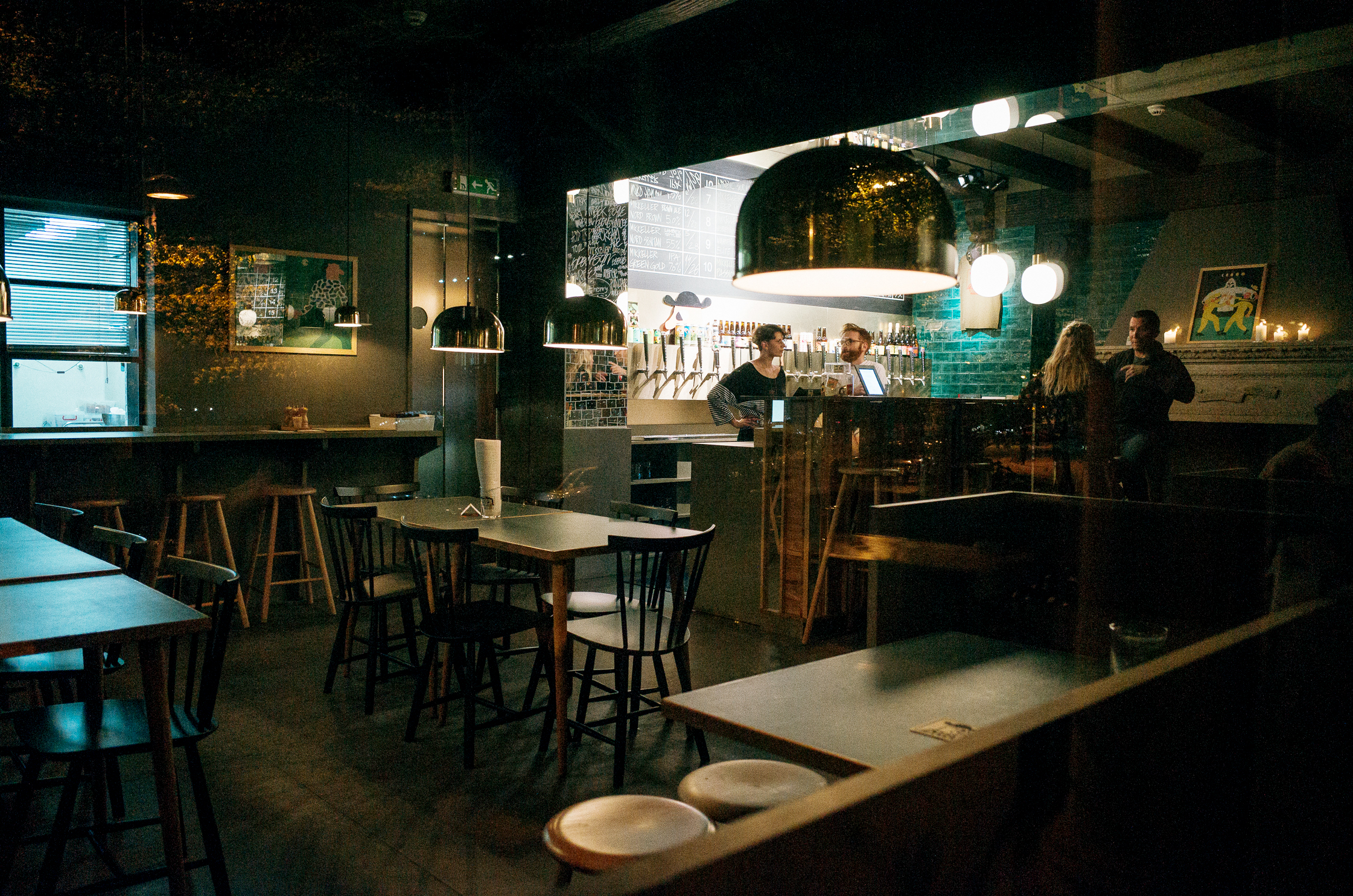
Ilinca chats with Bobo Popesco, head chef of Mikkeller Bucharest.
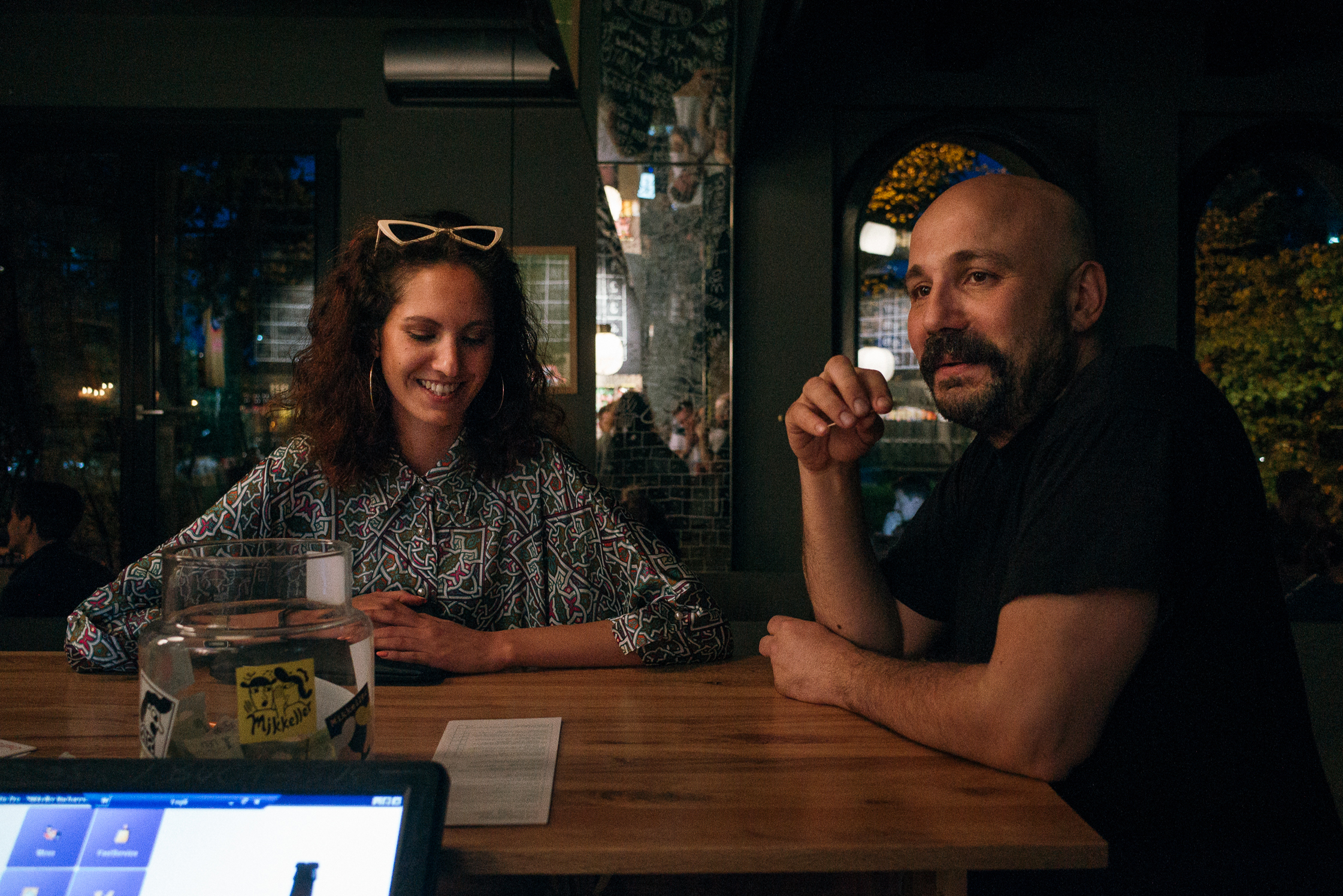
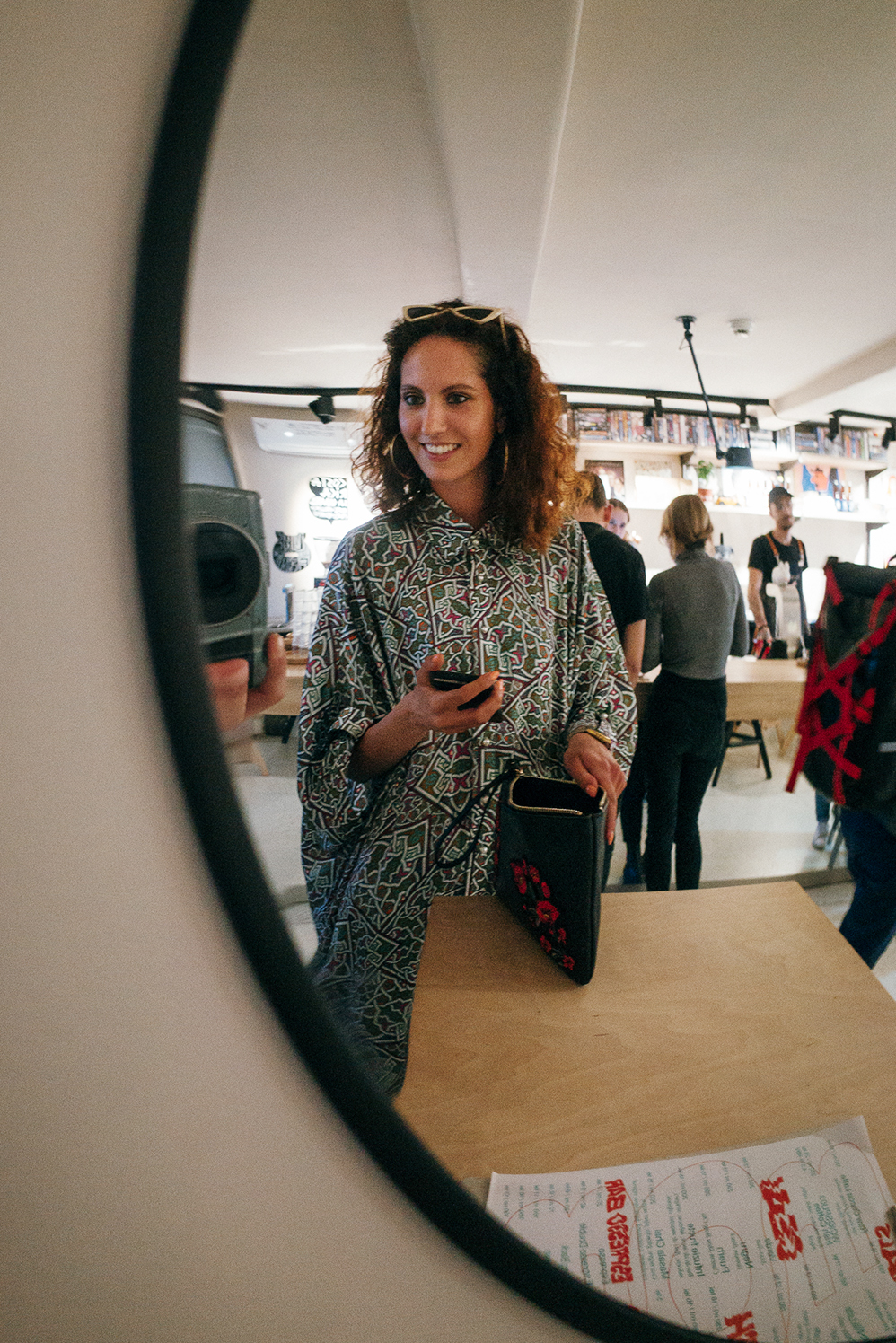
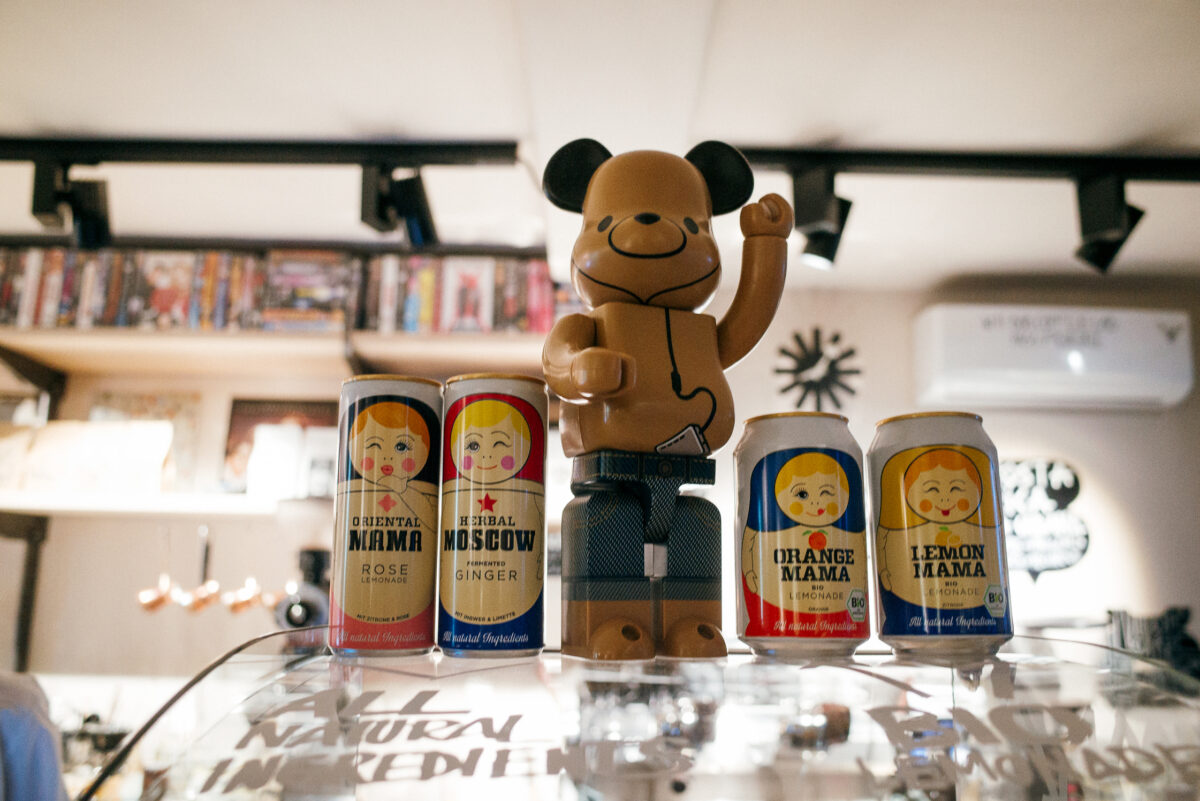
Upon the next destination, both of them are decided: “Tormen! It is closed now, but go tomorrow. It’s just this classic little Romanian bistro, it’s been there for like forty years. It’s been through a revolution! It’s where you meet up after a night out.” Tormen has that homely, authentically tacky vibe to it. 1970s advertisements are hung in frames on the walls; a Coca-Cola sign is lit up in neon red behind the wooden bar; the floors are tiled and a ceiling fan in the corner turns noncommittally . “Here you order Ciorba de Burta, tripe soup. Romanians love it, they say it cures a hangover. It’s made with beef belly, sour cream, garlic and vinegar. I wouldn’t cure my hangover with it.” No—today it’s sarmale, a Turkish dish of cabbage leaves stuffed with rice and meat, meant for special occasions. “At a wedding you eat sarmale, at Christmas you eat sarmale, at Easter you eat sarmale. No matter what the celebration, you eat Sarmale!” Well, nothing to celebrate today, besides another day in Bucharest.
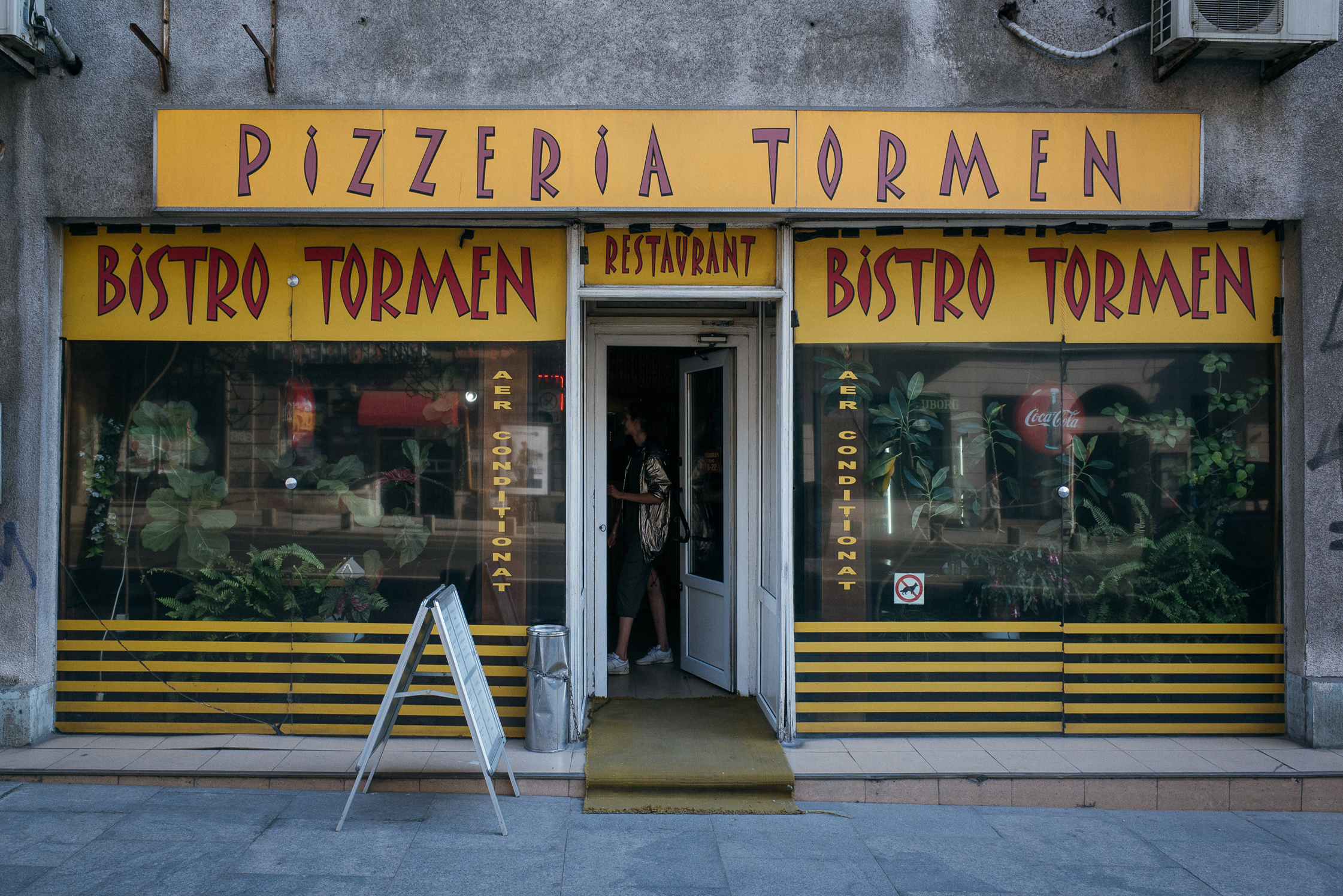
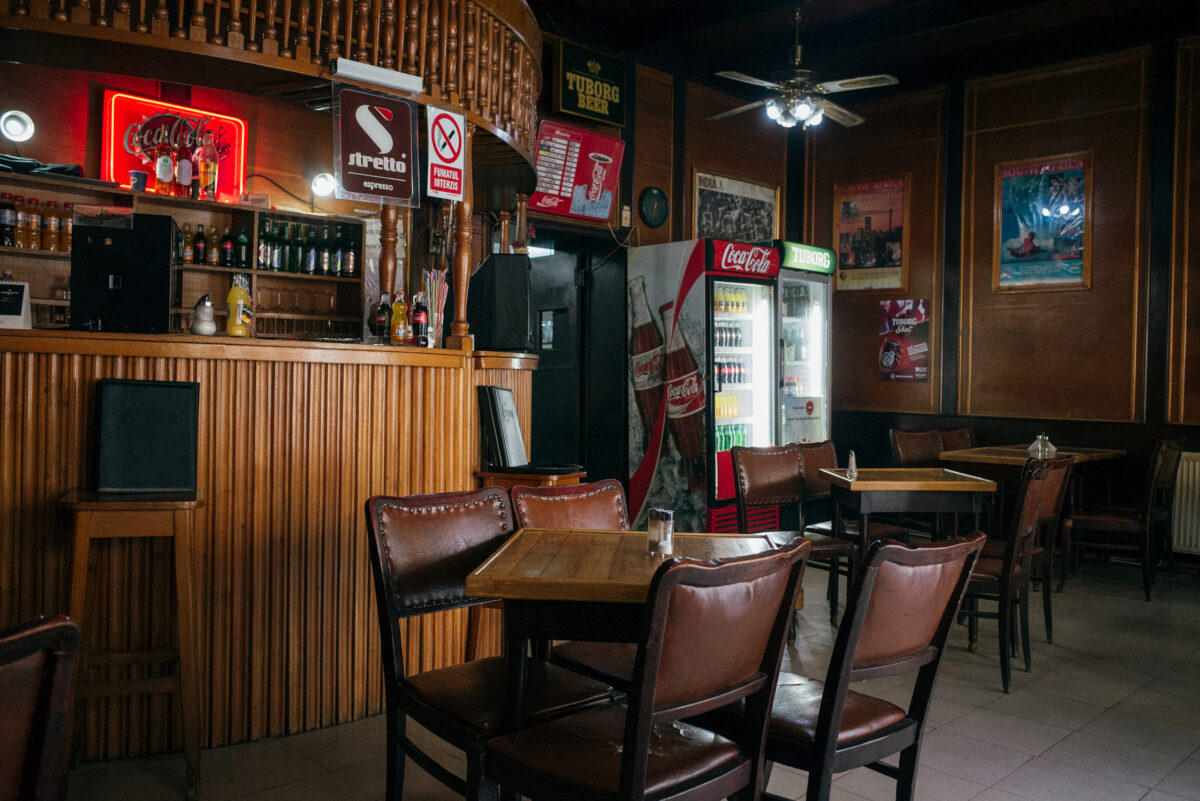
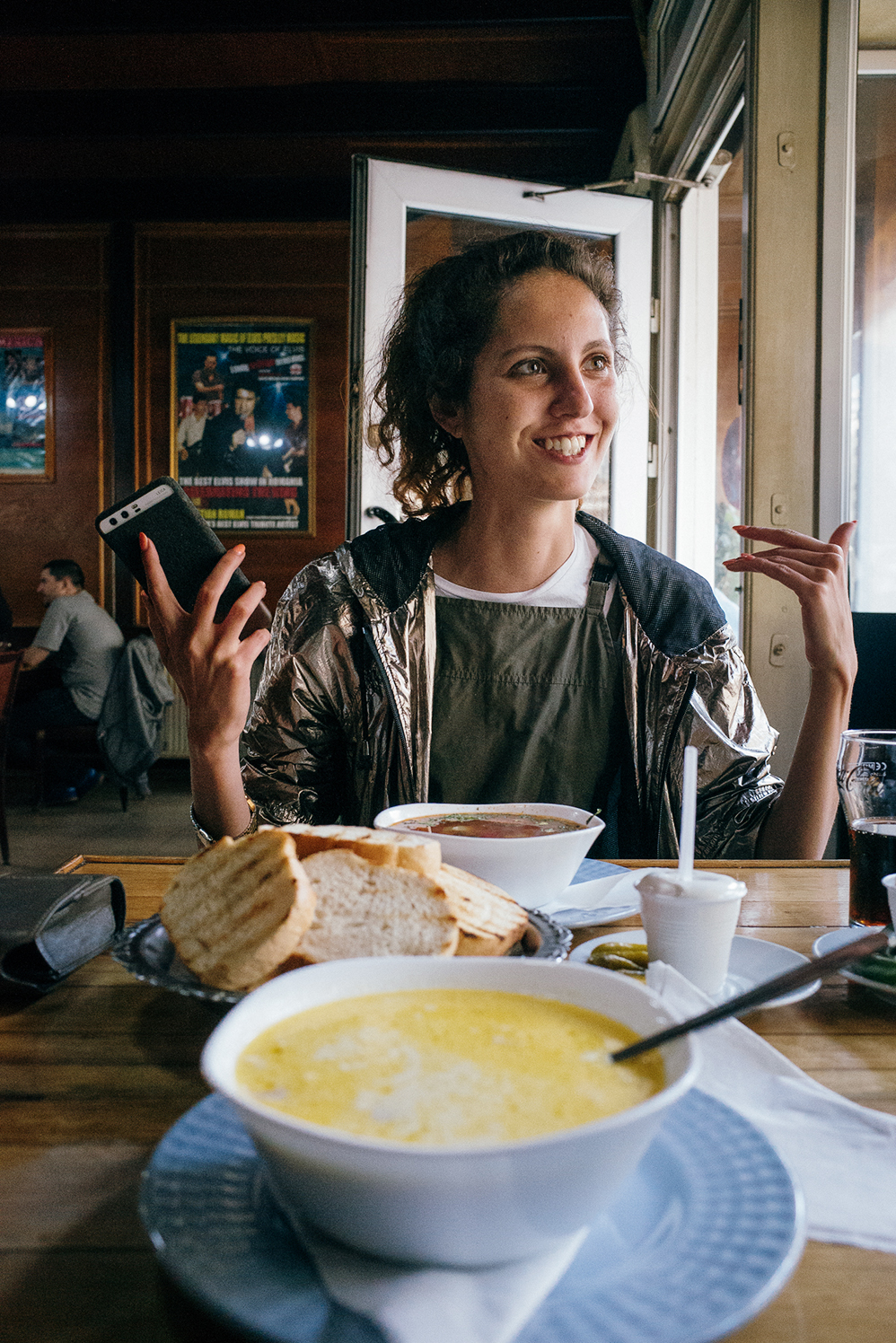
FvF joined the launch party of Electronic Beats Romania at Control Club. We met up with different artists and musicians from Bucharest, and Luiza and Illinca were so kind as to show us around their city. Striving to learn about creative people all over the world, we’re aiming to look more into Eastern European cities and scenes. For this first story, we collaborated with Telekom Electronic Beats who have been working with creative minds of Eastern Europe for many years. Find out about YellLow’s upcoming dates and check out Illinca’s work.
Explore Bucharest a little more and take a look at our video article with Radu Ion, a silversmith who works in the city’s suburbs.
Text: Louis Harnett O’Meara
Photography: Rano Zerca
